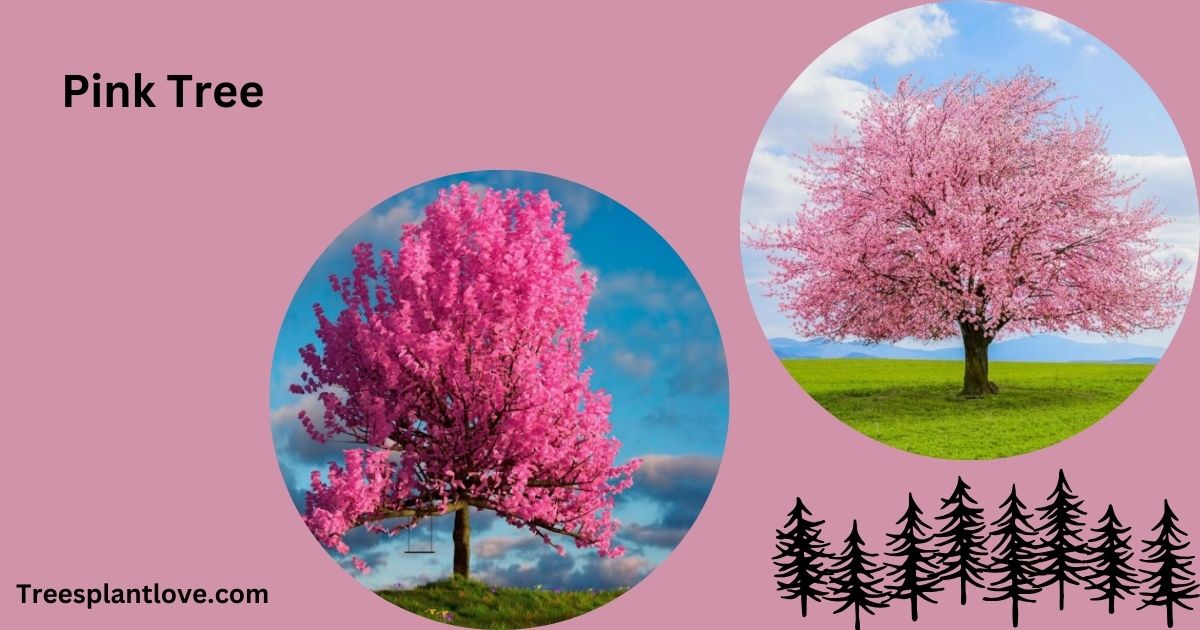
Pink Trees: Stunning Varieties, Care Tips, and Benefits for Your Garden
Pink Trees: The pink tree is a stunning addition to any garden, offering both beauty and vibrancy. With its soft, colorful blooms, a pink tree can transform outdoor spaces into a tranquil oasis. There are various pink tree varieties, each with unique characteristics that add charm to landscapes.
In this post, we will explore the different types of pink trees, how to care for them, and their cultural symbolism. Whether you’re a gardening enthusiast or simply love vibrant plants, discovering the beauty of the pink tree is a rewarding experience. Let’s dive into everything you need to know about this enchanting tree.
What is a Pink Tree?
A pink tree refers to any tree variety that blooms with vibrant pink flowers. These trees are highly valued for their striking color and ability to brighten landscapes. Known for their graceful appearance, pink trees can be found in various shapes and sizes, offering an enchanting addition to gardens and parks.
Popular Varieties of Pink Trees
Several pink tree varieties are popular among gardeners. Cherry Blossom trees are well-known for their pink blossoms, symbolizing renewal. The Pink Dogwood tree features delicate pink petals and attractive foliage. Other notable pink trees include the Crape Myrtle and Pink Magnolia, which also offer stunning pink flowers in different seasons.
How to Care for Your Pink Tree
To ensure your pink tree thrives, proper care is essential. Plant your tree in well-drained soil with adequate sunlight. Regular watering is important during dry periods, while pruning helps maintain its shape. Fertilizing your pink tree in spring promotes healthy growth and vibrant blooms. Keep an eye out for pests and diseases.
The Symbolism Behind the Pink Tree
The pink tree holds significant symbolism in many cultures. In some traditions, the pink bloom represents love, beauty, and grace. Cherry blossoms, a popular pink tree, are associated with renewal and hope. A pink tree can add both aesthetic value and meaningful symbolism to any landscape, making it a special addition to your garden.
A Brief History of the Pink Tree
The history of the pink tree dates back centuries, with many varieties rooted in ancient traditions. Pink trees, such as the Cherry Blossom, have deep cultural significance in places like Japan. These trees have been celebrated for their beauty and fleeting blooms, symbolizing the transient nature of life.
Throughout history, pink trees have been admired for their ornamental value. Ancient gardeners cultivated pink tree species to enhance landscapes and express beauty. In Western cultures, the pink tree became synonymous with spring and renewal, with cherry blossoms often marking the arrival of warmer months.
Today, the pink tree continues to be a beloved feature in gardens worldwide. Whether it’s the fragrant Pink Magnolia or the vibrant Crape Myrtle, these trees offer timeless beauty. Their rich history and stunning appearance make the pink tree an enduring symbol of elegance and grace across various cultures.
Pink Tree: A Stunning Addition to Any Landscape
- What is a Pink Tree?
- A pink tree is a tree that blooms with vibrant pink flowers.
- These trees create a beautiful and colorful display in spring and early summer.
- Pink trees are perfect for adding a pop of color to any garden or landscape.
- Popular Types of Pink Trees
- Cherry Blossom Trees: Known for their delicate pink flowers, these trees symbolize renewal.
- Magnolia Trees: Their large, fragrant pink blooms make them an elegant landscape feature.
- Pink Dogwood: This tree offers a soft pink hue, ideal for small gardens and spaces.
- Pink Silk Tree: Known for its unique, fluffy pink flowers and fast growth.
- Benefits of Planting Pink Trees
- Pink trees can enhance the beauty of your yard and neighborhood.
- They attract pollinators like bees and butterflies, improving local ecosystems.
- These trees can provide natural shade and cool your outdoor spaces during summer.
- The vibrant pink color adds a cheerful touch to your garden design.
- When Do Pink Trees Bloom?
- Most pink trees bloom in early spring, with some varieties flowering into summer.
- The bloom period typically lasts for a few weeks, creating a spectacular show.
- Depending on the species, blooming times may vary slightly based on climate.
- Care Tips for Growing Pink Trees
- Choose a planting site with well-drained soil and full to partial sunlight.
- Water your pink tree regularly, especially during dry spells, to ensure healthy growth.
- Prune the tree after blooming to maintain its shape and remove dead branches.
- Fertilize your pink tree in early spring to encourage abundant blooms.
- Why Choose a Pink Tree for Your Garden?
- Pink trees are a great way to add color and elegance to any landscape.
- They offer year-round interest, with beautiful flowers in spring and attractive foliage in fall.
- Pink trees can be grown in various climates, making them versatile and easy to incorporate into any garden.
- Common Problems with Pink Trees
- Watch for pests like aphids, which can damage leaves and flowers.
- Ensure your pink tree is not overwatered, as it may lead to root rot.
- Keep an eye on fungal diseases, which can affect the tree’s health and appearance.
- Where to Buy a Pink Tree
- Local nurseries or garden centers often have a selection of pink trees in stock.
- Online plant retailers provide a wide variety of pink trees for delivery to your doorstep.
- Be sure to choose a healthy tree from a reputable seller to ensure proper growth.
FAQ’S About Pink Tree
What is a Pink Tree?
A pink tree is a tree that produces stunning pink flowers during the blooming season. These trees are commonly planted for their vibrant colors and decorative appeal in gardens.
What are the Best Types of Pink Trees?
Popular pink trees include Cherry Blossoms, Magnolias, Pink Dogwoods, and Pink Silk Trees. Each offers unique pink blooms, adding beauty to gardens and landscapes with their distinct forms.
When Do Pink Trees Bloom?
Pink trees typically bloom in early spring, marking the season’s arrival. Some species bloom for a few weeks, while others may continue into the early summer for extended beauty.
How Do I Care for a Pink Tree?
Care for a pink tree by planting it in well-drained soil and full sunlight. Water regularly and prune after blooming to maintain its health and shape throughout the seasons.
Where Can I Plant a Pink Tree?
Pink trees thrive in locations with full to partial sunlight and well-drained soil. Avoid planting in areas with poor drainage to prevent root rot and ensure healthy growth.

Leave a Reply